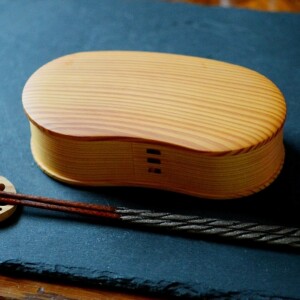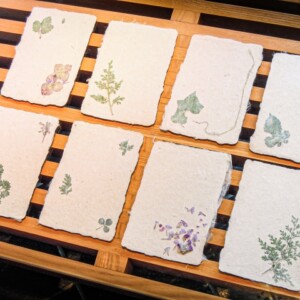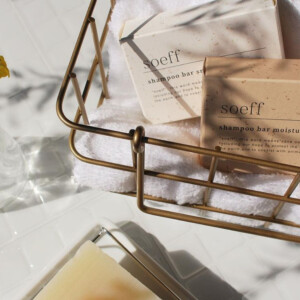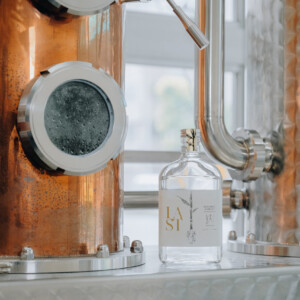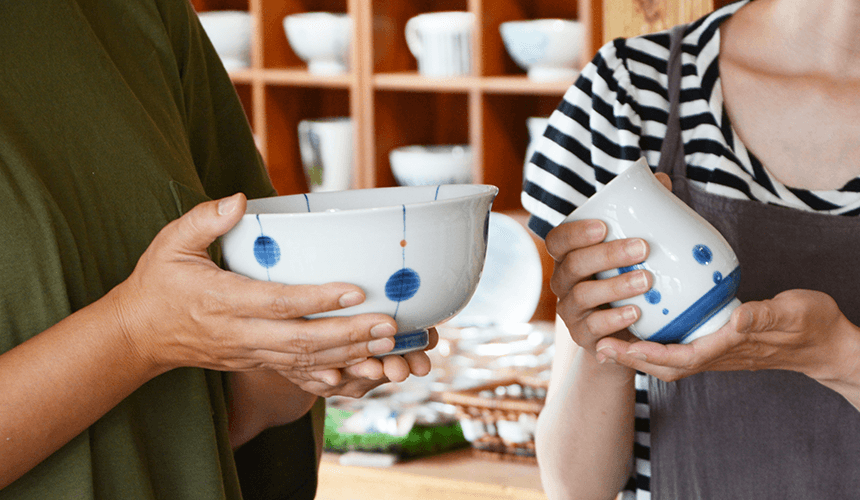
Learn about the luxury of daily use with sustainable pottery and Tobe ware.
With the spread of ideas such as sustainable and SDGs, more and more people want to use environmentally friendly, high-quality products with care for a long time.
In this issue, we introduce Tobe ware, which is durable and chip-resistant, making it ideal for daily use.
Tobe ware is reasonably priced and comes in a wide variety of designs, from traditional white porcelain with blue tinting to cute and fashionable designs created by young artists.
Tobe Pottery is handmade by potters at Tobe’s kilns from pottery stones obtained in Tobe, and each piece is loved as an ethical pottery with warmth.
The characteristic of Tobe Pottery is thick and sturdy, handmade by craftsmen.
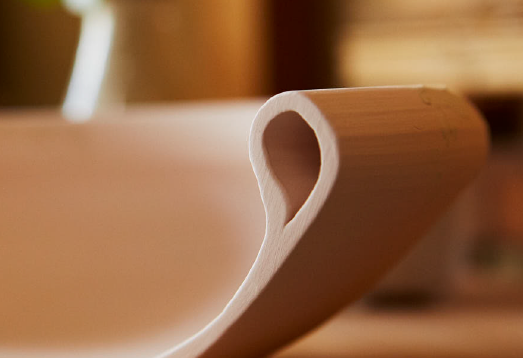
Tobe ware is characterized by its thick, rounded form, which is best described as “chunky,” and its boldly painted blue underglaze blue on white porcelain.
Tobe ware is made from pottery stone produced in Tobe, and is fired at a high temperature of 1,300℃, making it very hard and thick, making it durable and resistant to chipping. There is a legend that the bowl will not break even if a couple throws it in a fight, and it was also called “Fighting bowl.
It is also easy to use because it does not conduct heat easily, so food does not get cold easily, and it is not hot to hold, and the rounded rim prevents spills, making it very practical.
However, they are not mass-produced, as is often the case with practical products, but are made by hand, one by one, by craftsmen, and the hand-dyeing is also done by hand, preserving the tradition of hand-writing.
Tobe ware is durable and easy to use in daily life, but at the same time, it is a luxurious product that allows you to appreciate the handiwork of the craftsmen.
Tobe Pottery is full of tradition and new charm.
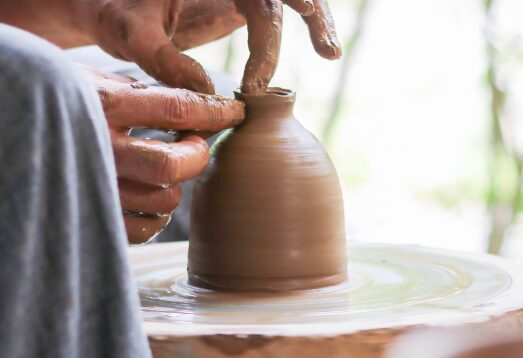
While preserving handcraftsmanship and traditional dyeing, Tobe Pottery is also flexible enough to embrace new sensibilities.
While traditional designs are firmly maintained, diverse designs have increased.Currently, there are approximately 100 kilns.
Preserving Tradition
Tobe Pottery is best known for its white, chubby form with a beveled rim, and the boldly painted “sun,” “arabesque,” and “arabesque” designs that are considered traditional Tobe Pottery designs.
The color is mainly indigo blue, as it is dyed using a pigment called gosu.There are also celadon, white porcelain, and iroe.
In addition, four types of wares, namely, white porcelain, underglaze blue, celadon, and tenmoku (iron glaze), have been designated as traditional handicrafts by the national government.
A New Sense
In recent years, young and female artists have set up their own studios to create Tomochi pottery with a new sensibility.
The designs are diverse, ranging from pretty, pale, watercolor-like designs, Asian-inspired patterns, Scandinavian designs, and designs that look like contemporary artwork.
Tobe-yaki mugs are gaining in popularity.
While there is much demand for traditional Japanese tableware made from Tobe ware, mugs have recently become more popular.
Each potter carries on the tradition of Tobe-yaki’s character, but each kiln has its own distinctive design.These stylish and cute cups add color to everyday life.
The history of Tobe Pottery has been marked by the hard work of villagers and the technical innovations of potters.
This section explores the history of how Tobe Pottery was created and how it developed as an industry.
Tomochi in the Kofun Period
Since the mountains of Tomochi have a slope suitable for kilns and wood for fuel was abundant, Sue ware has been fired since the Kofun period.
Among the Sue ware discovered, the “Komoji Taka Cup” has been designated as a national cultural property.Until the middle of the Edo period, ceramics were made instead of porcelain as we know it today.
History as a Grinding Stone
Since the Nara and Heian periods, whetstones cut from the Tomochi and Sotoyama mountains were widely known for their white color and soft quality, making them suitable for sharpening swords.
While the production of whetstones was flourishing, the disposal of whetstone waste from the cutting process was left to the villagers, who were mobilized free of charge.The villagers were so distressed that they finally asked the Ozu clan to exempt them from the burden of labor, resulting in the “grinding stone discarding incident.
Sustainable pottery made from whetstone shavings
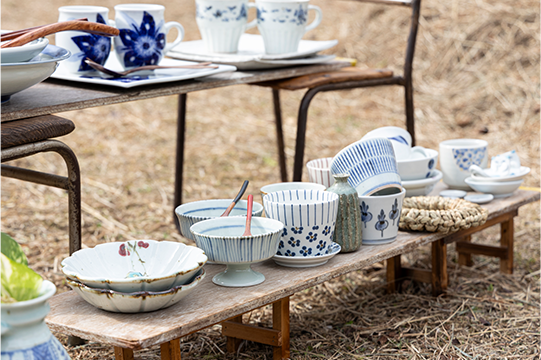
Abrasive stoneware began in 1775 when Yasutoki Kato, lord of the Ozu domain, ordered Josuke Sugino to make porcelain by reusing discarded abrasive stone shavings.
Sugino Josuke built a climbing kiln and through repeated trial and error, succeeded in firing white porcelain in 1776, after which the technique was continually improved and developed uniquely and exported overseas.
Tomochi Pottery in the Meiji Era
In the Meiji period (1868-1912), Tomochi ware was exported under the name “Iyo Bowl,” and at the World’s Columbian Exposition in Chicago, the “pale yellow porcelain” produced by Wahei Mukai won the first prize, and the name of Tomochi ware became known throughout the world.
Promoters of the folk art movement praised Tobe ware.
Production declined in the prewar years of the Taisho and Showa eras, but after the war, the quality of handcraftsmanship was reevaluated and highly praised by Yanagi Muneyoshi and other promoters of the folk art movement.
In 1976, the area was designated as a “traditional craft production area.” The fact that handiwork has been linked without interruption throughout its more than 250-year history is a great asset not only to the Tomochi area but also to Japan.
Tobe ware can be said to be a sustainable porcelain born out of the large amount of waste from grinding stone shavings.
Buy attractive Tobe Pottery
Tomochi pottery has a wide variety of mail-order sites, and each kiln has its own mail-order site.There are also convenient shopping malls where you can easily search for what you want by kiln, artist, or product.
In Tokyo, you can purchase pottery at places such as “Tobe Pottery Hamato” in Jiyugaoka and “Utsuwa no Wada” in Gotokuji.It would be fun to visit the production center while sightseeing.
Conclusion
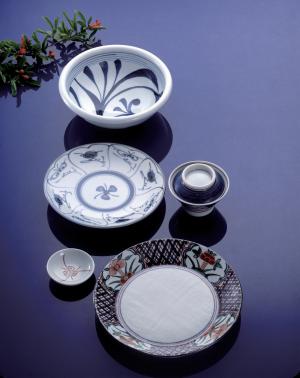
Tobe ware, characterized by boldly painted blue underglaze blue on chubby white porcelain, is durable and reasonably priced, making it suitable for daily use.Each piece is still handmade by potters, so you can feel the warmth of their handiwork.
In recent years, the number of young and female potters has been increasing, and new and innovative designs of Tobe ware are being produced while inheriting the tradition.
Tobe Pottery, which was born from the reuse of stone shavings that had originally been discarded, is the embodiment of sustainability.Why not experience the luxury of using traditional handmade porcelain in your daily life?
Reference source: What is Tobe Pottery / Tobe Town Official Website
Reference source: [Mail order site of Tobe Pottery] Umenose Kiln official online store



